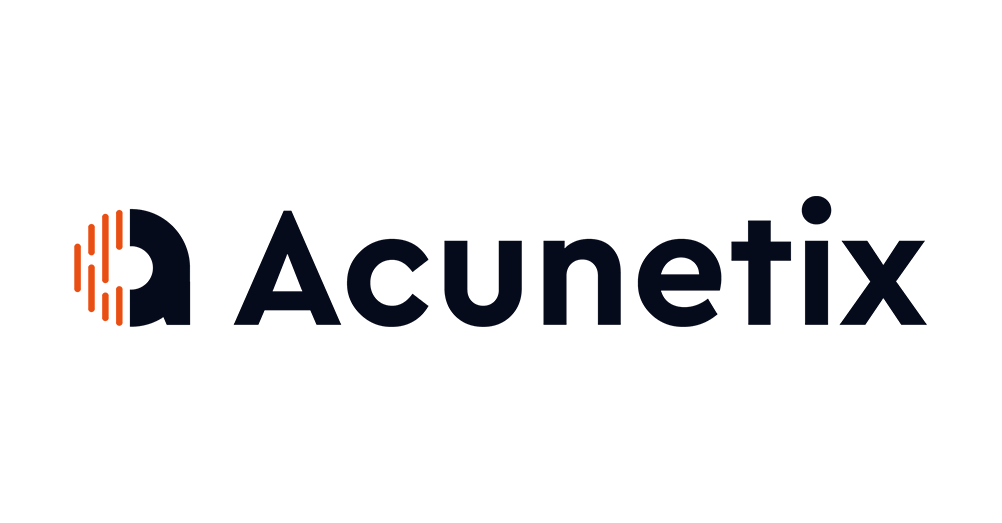Supply Chain Security
Description
The term “supply chain” has expanded beyond the realm of physical goods and manufacturing. It now encompasses the entire lifecycle of software development, from inception to distribution. As technology continues to evolve and integrate into every aspect of our lives, the need for software supply chain security has become more critical than ever.
In this comprehensive guide, we will explore the importance of securing the software supply chain, its top threats, and how to develop a robust test plan to protect your organization.
1. What is Software Supply Chain Security?
Software supply chain security is the practice of implementing strategies, processes, and controls to safeguard the entire lifecycle of a software product, from design and development to deployment and maintenance.
It aims to protect the software and its associated components, including source code, third-party libraries, and infrastructure, against potential vulnerabilities, threats, and attacks. This involves securing the software development process, ensuring the trustworthiness of third-party vendors, and implementing continuous monitoring and vulnerability management techniques.
By prioritizing software supply chain security, organizations can mitigate the risk of supply chain attacks, protect their digital assets, stay compliant with critical regulations, and maintain the integrity, confidentiality, and availability of their software products.
2. Why is Software Supply Chain Security Critical?
As was seen in the recent 3CX breach that was, in fact, two linked supply chain attacks, the threats are only growing in severity. And while it’s only one aspect of a comprehensive, defense-in-depth cybersecurity solution, software supply chain security is crucial for several reasons:
Cybersecurity Threats Are Growing
As cybercriminals become more sophisticated and organized, the potential for software supply chain attacks increases exponentially. These attacks can compromise not only the targeted software but also any connected systems or users, leading to widespread disruptions and financial losses.
Increasing Reliance on Third-Party Components
Modern software development often involves the use of third-party libraries, frameworks, and services. While these components can improve efficiency, they also introduce potential vulnerabilities that must be addressed to ensure the software’s overall security.
Compliance Requirements
Regulatory bodies such as The North American Electric Reliability Corporation Critical Infrastructure Protection (NERC-CIP) and the National Institute of Standards and Technology (NIST) impose stringent requirements on cybersecurity. Ensuring software supply chain security is essential for meeting these regulations and avoiding costly penalties.
3. Top Security Threats to the Software Supply Chain
It shouldn’t come as a surprise that a complex challenge like software supply chain security has an equally complex array of associated cyberthreat vectors. Some of the most prevalent security threats to the software supply chain include:
Malicious Code Insertion
Attackers can compromise software by inserting malicious code, such as backdoors, ransomware, or data exfiltration mechanisms.
Vulnerable Third-party Components
The use of outdated or insecure third-party libraries, frameworks, or services can introduce vulnerabilities that attackers can exploit to gain unauthorized access or execute malicious actions.
Insider Threats
Disgruntled employees or contractors with access to sensitive information or systems can pose a significant threat to the software supply chain.
Counterfeit Components
Counterfeit software components, either maliciously created or unknowingly distributed, can compromise the integrity of the entire software supply chain.
4. How Does a Supply Chain Attack Work?
While all cyberattacks vary in how they present themselves, a supply chain attack typically involves the following steps:
- Target identification: The attacker identifies a vulnerable component within the software supply chain, such as a third-party library or development tool.
- Exploitation: The attacker exploits the identified vulnerability, either by inserting malicious code or by leveraging an existing flaw to gain unauthorized access.
- Propagation: The compromised component is distributed to other systems or users, either directly or through updates, patches, or other means.
- Execution: Once the malicious component has been integrated into the targeted software, the attacker can execute their intended actions, such as stealing data, disrupting operations, or demanding ransom.
5. Top Tips for Software Supply Chain Risk Management
To mitigate the risk of software supply chain attacks, organizations should adopt the following best practices:
Perform Thorough Due Diligence
Vet third-party vendors and their software components for security and compliance. Ensure they follow industry-standard best practices and maintain up-to-date security patches.
Continuously Monitor for Vulnerabilities
Regularly scan software components for known vulnerabilities and apply security patches promptly.
Implement Strong Access Controls
Limit access to sensitive systems and information to only those who need it. Implement multi-factor authentication (MFA) and enforce strong password policies.
Educate Employees
Train employees in cybersecurity best practices and the importance of software supply chain security.
Develop an Incident Response Plan
Establish a plan for detecting, containing, and recovering from a software supply chain attack. See how Hitachi Energy implements a successful supply chain cybersecurity strategy.
6. How to Develop a Software Security Test Plan
A proactive approach to cybersecurity is not something to simply consider when building a solution strategy—it’s a necessity. One of the ways to take proactive steps is by planning for regular security test planning. A security test plan is essential for identifying potential vulnerabilities and ensuring the overall security of a software product. These steps will guide you to develop an effective security test plan:
- Define the Scope: Determine which components, systems, and environments will be included in the testing process.
- Identify Potential Threats and Vulnerabilities: Conduct a thorough risk assessment to identify potential threats, vulnerabilities, and attack vectors.
- Develop Test Cases: Create test cases that address each identified threat or vulnerability. This may include penetration testing, vulnerability scanning, code reviews, and static and dynamic analysis.
- Assign Roles and Responsibilities: Clearly define the roles and responsibilities of each team member involved in the security testing process.
- Establish a Testing Schedule: Develop a timeline for conducting security tests and ensure they are integrated into the overall software development lifecycle.
- Document and Report Results: Record the results of each security test, including any identified vulnerabilities and remediation actions taken. Share this information with relevant stakeholders to ensure transparency and accountability.
7. The Importance of a Software Bill of Materials (SBOM)
Software Bill of Materials (SBOM) is something else that plays a crucial role in supply chain cybersecurity. An SBOM is a comprehensive list of all the software components and dependencies that make up a software product. It helps organizations identify and track the software components that are used in their products or systems, including their versions, licensing information, and known vulnerabilities—something the right asset management and visibility solution can assist with.
With an SBOM, organizations can effectively manage their software supply chain, ensuring that they have complete visibility into their software components and the risks associated with them. This can help them identify and mitigate vulnerabilities in their software supply chain, reducing the risk of cyberattacks and supply chain breaches. Additionally, an SBOM can help organizations enforce security policies, comply with regulations and standards, and improve their overall cybersecurity posture.
8. Future of Software Supply Chain Security
In an ever-evolving technological world, we need to keep an eye on what the future holds in order to stay with—or better yet, ahead of—the curve. The future of software supply chain security will likely be shaped by several key factors and trends.
- Integration of AI and Machine Learning: Artificial intelligence (AI) and machine learning (ML) technologies hold immense potential for improving software supply chain security. By leveraging these technologies, organizations can better detect and mitigate potential threats and vulnerabilities, automate security testing, and streamline incident response. AI and ML can also help in identifying abnormal behavior patterns within the software supply chain, further enhancing overall security.
- Shift to DevSecOps: DevSecOps, the integration of security practices into the DevOps process, will continue to gain momentum. By adopting a DevSecOps approach, organizations can ensure that security is a core part of the software development lifecycle from inception to deployment. This shift will lead to faster detection and remediation of vulnerabilities, reducing the risk of supply chain attacks.
- Increased Focus on Supply Chain Transparency: As organizations become more aware of the potential risks associated with third-party components, there will be an increased focus on supply chain transparency. Vendors will need to provide detailed information about their security practices, patch management, and risk mitigation strategies. This increased transparency will empower organizations to make more informed decisions when selecting third-party components and services.
- Blockchain Technology: Blockchain technology has the potential to revolutionize software supply chain security by providing a secure, tamper-proof, and transparent system for tracking and verifying the provenance of software components. By leveraging blockchain, organizations can better ensure the integrity of their software products and prevent the introduction of counterfeit or malicious components.
- Enhanced Regulatory Oversight: As the threat landscape continues to evolve, we can expect increased regulatory oversight and stricter requirements for software supply chain security. Organizations will need to comply with existing regulations like NERC-CIP, NIST, and more, as well as adapt to new regulations that may be introduced in the future. These regulations will likely place a greater emphasis on supply chain risk management and may require organizations to demonstrate their efforts in securing the software supply chain.
- Collaborative Defense: The future of software supply chain security will also see a growing emphasis on collaboration between organizations, vendors, and industry groups. Sharing threat intelligence, best practices, and resources can help organizations stay ahead of emerging threats and bolster their overall security posture. By working together, organizations can create a more secure software ecosystem and mitigate the risks associated with supply chain attacks.
Conclusion
Software supply chain security is a critical aspect of protecting an organization’s digital assets and ensuring the integrity, confidentiality, and availability of its software products.
Organizations that proactively adapt to changes and prioritize software supply chain security with the right software will be better positioned to protect their digital assets, maintain the trust of their customers and stakeholders, and remain compliant with critical regulations.
Products
MetaDefender Drive
Transient Device Threat Scanner
MetaDefender Drive creates a portable perimeter, anywhere maintaining an airgap is critical. View Details →
MetaDefender OT Security
OT Asset Visibility Simplified
Designed for enterprise-level deployments, MetaDefender OT Security provides full visibility into your OT assets and networks, continuously discovering assets, and monitoring for threats, vulnerabilities, supply chain violations, and non-compliance issues. View Details →
MetaDefender Software Supply Chain
Secure Your Software Development Lifecycle and Meet Compliance Standards
Attackers take many routes to infiltrate the software supply chain. They exploit vulnerabilities in open-source and third-party dependencies, inject malware into software components, and target developers to gain unauthorized access to their source code.
OPSWAT MetaDefender Software Supply Chain provides expanded visibility and a robust defense against supply chain risks. With our zero-trust threat detection and prevention technologies, your software development lifecycle (SDLC) is secured from malware and vulnerabilities, strengthening application security and compliance adherence. View Details →





 ...[Read More]
...[Read More]